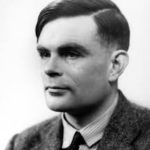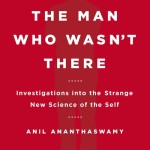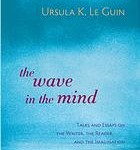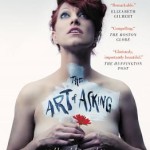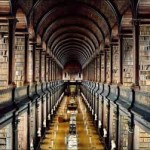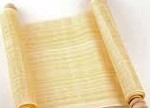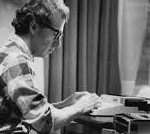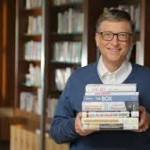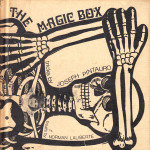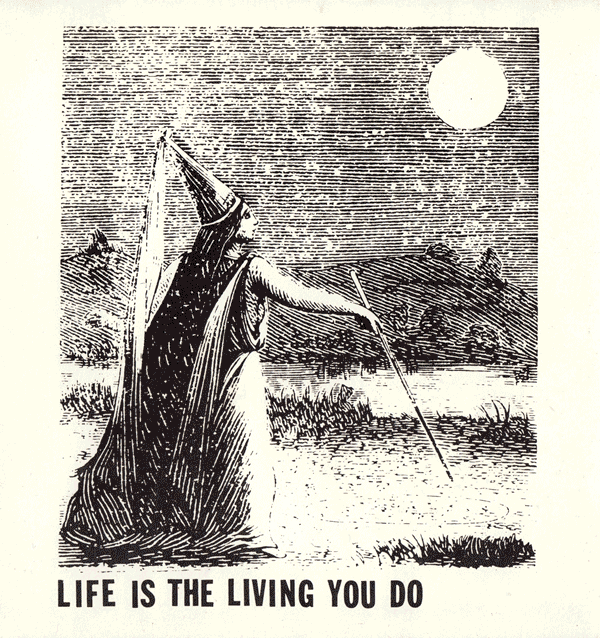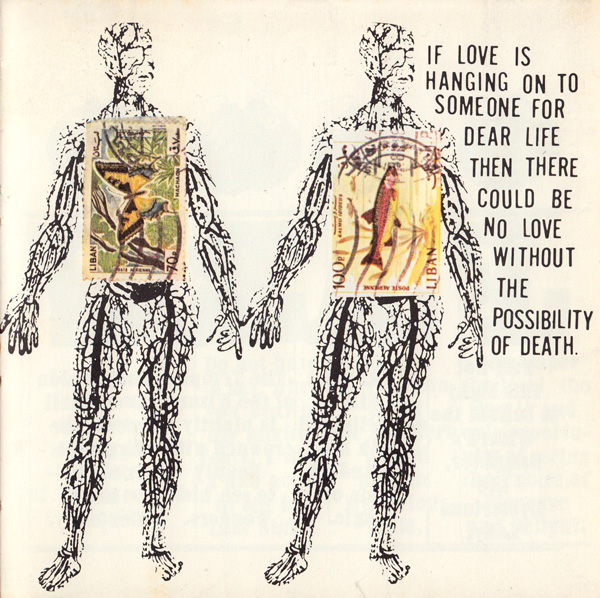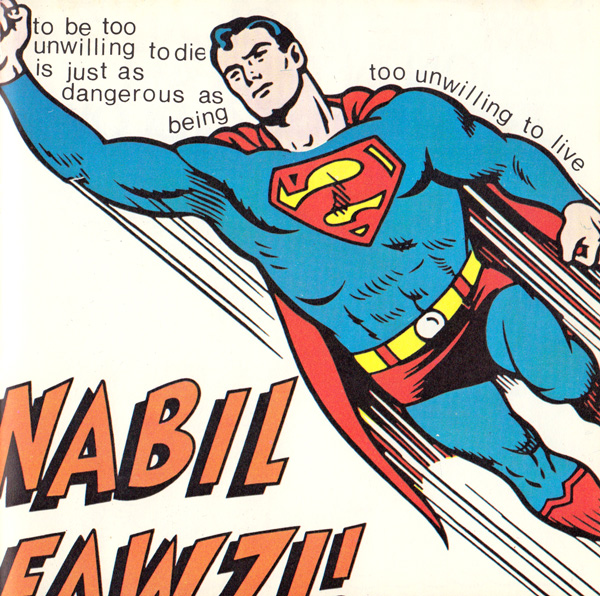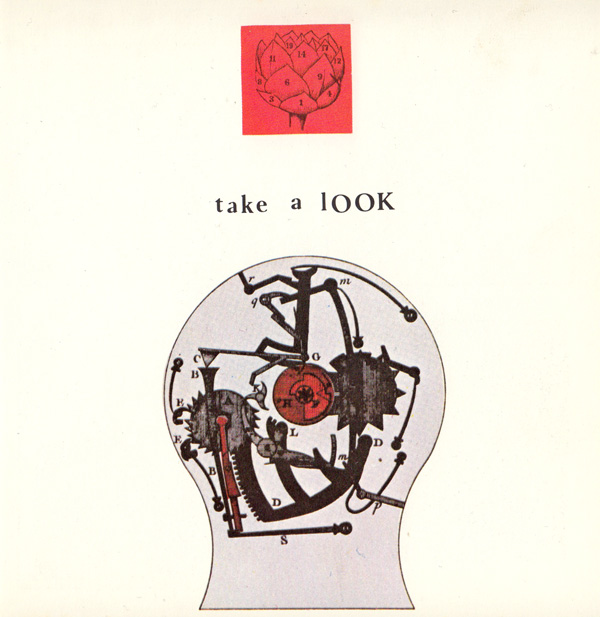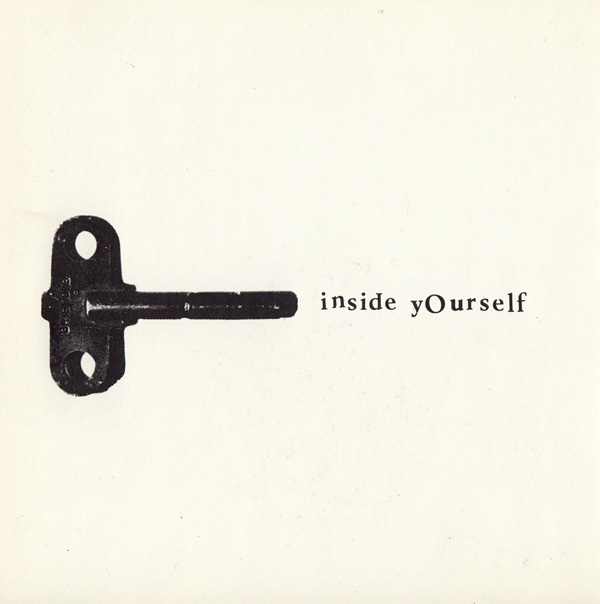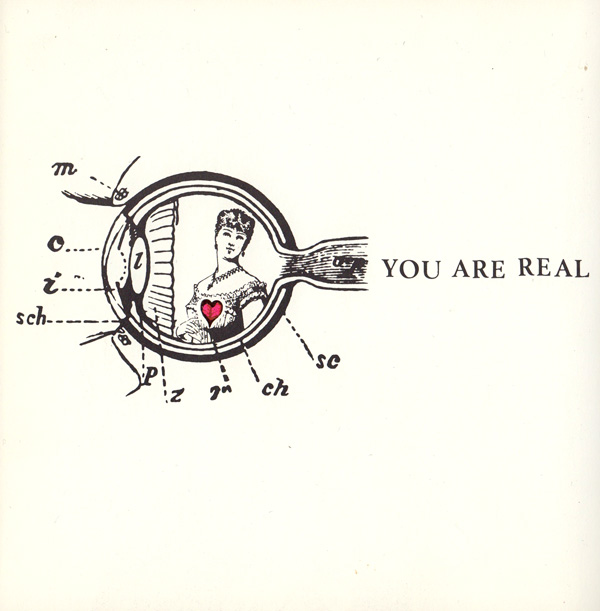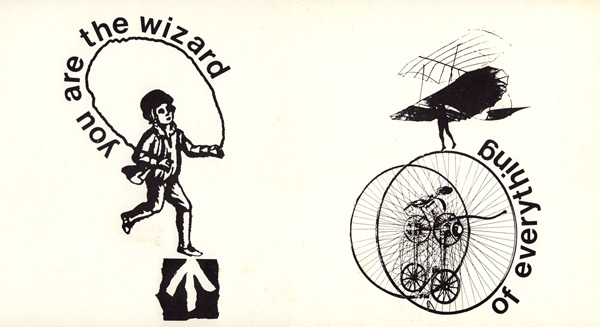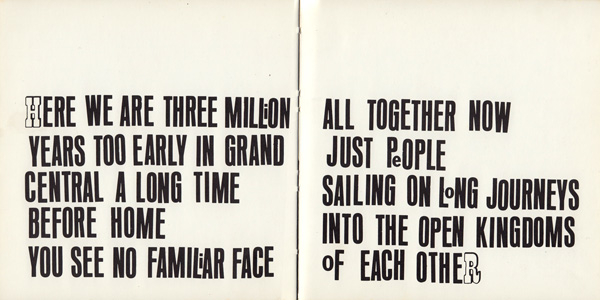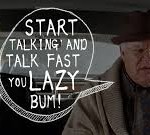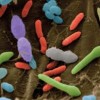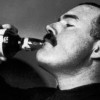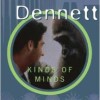Celebrating 80 years of Turing’s revolutionary paper “On computable Numbers, with an Application to the Entscheidungsproblem” a great compilation ca be found in Jack Copeland edition of ‘The Essential Turing‘: a guide for Alan Turing’s writings on Turing Machines, Enigma decoding, Artificial Intelligence, and more.
Tag Archives: books
“The Man Who Wasn’t there” book review by Alun Anderson
Review of “The Man Who Wasn’t There: Exploring the science of the self” by Anil Ananthaswamy.
“For ordinary folk, a unified sense of self is taken for granted. We sit comfortably inside a body we feel is ours, seeing, hearing, touching and smelling. Gloomy or happy, our feelings plainly belong to us.(…) This self appears to us seamlessly and effortlessly as a whole.
The Man Who Wasn’t There could be described as a dedication to a different group – those whose unity of self has fragmented – and to the way they have helped us understand the self through their cooperation with scientists and philosophers, and their long hours in brain scanners.Continue reading
“Telling Is Listening” review at brainpickings
Maria Popova on “Telling is Listening”, part of Ursula K. Le Guin’s collection of nonfiction writings published at “The wave in the mind : talks and essays on the writer, the reader, and the imagination”
“Every act of communication is an act of tremendous courage in which we give ourselves over to two parallel possibilities: the possibility of planting into another mind a seed sprouted in ours and watching it blossom into a breathtaking flower of mutual understanding; and the possibility of being wholly misunderstood, reduced to a withering weed. Candor and clarity go a long way in fertilizing the soil, but in the end there is always a degree of unpredictability in the climate of communication — even the warmest intention can be met with frost. Yet something impels us to hold these possibilities in both hands and go on surrendering to the beauty and terror of conversation, that ancient and abiding human gift. And the most magical thing, the most sacred thing, is that whichever the outcome, we end up having transformed one another in this vulnerable-making process of speaking and listening.Continue reading
“The Art of Not-Having-to-Ask” review by Maria Popova
Originally published as a postscript of Amanda Palmer’a The “Art of Asking: How I Learned to Stop Worrying and Let People Help”
Below an excerpt – read full post at brain pickings.
“We are embodied spirits who need raw material, both physical and spiritual, to create. But we forget that we are also social beasts who need not slash through the bramble of those needs alone.
In Buddhism and other ancient Eastern traditions, there is a beautiful concept connoted by the Pali word dana (pronounced DAH-nah), often translated as the virtue of generosity. But at its heart is something far more expansive — a certain quality of open-handedness in dynamic dialogue with need and organically responsive to it. The practice ofdana has sustained the Buddhist tradition for two and a half millennia — monks give their teachings freely, and the lay people who benefit from them give back to the monks by making sure their sustenance needs are met.Continue reading
“Future reading” by Craig Mod
Craig Mod’s tale of rise and fall of his enchantment over digital books. A critical view on how current closed ebooks platforms controlled by Amazon and Apple contributes to stagnating digital books development. Article from aeon magazine.
“From 2009 to 2013, every book I read, I read on a screen. And then I stopped. (…)
By 2009, it was impossible to ignore the Kindle. (…)
The Kindle was all of that and more. Neatly bundled up. I was in love.
(…) Granite, wood, wax, silk, paper, metal type, the Gutenberg press, Manutius’s octavo editions, Penguin paperbacks, desktop publishing software, digital type, on‑demand printing, .epub: the evolutionary path of ‘books’ has been punctuated by technological changes large and small. And so, too, with the Kindle.
(…) Containers matter. They shape stories and the experience of stories. Choose the right binding, cloth, trim size, texture of paper, margins and ink, and you will strengthen the bond between reader and text. Choose badly and the object becomes a wedge between reader and text.
(…) I was critical of Kindle typography and layouts from day one, but I assumed that these errors would be remedied quickly. My book notes felt locked away in Amazon’s ecosystem, but I assumed they would eventually produce better interfaces or export options for more rigorous readers.
(…) But in the past two years, something unexpected happened: I lost the faith. Continue reading
“Did technology kill the book or give it new life?” By Padraig Belton and Matthew Wall
“The book is dead, long live the book.
(…) While there can be no denying that printed book sales have taken a massive hit with the rise of digital, there is some evidence that the rate of decline is slowing and that the excitement over e-readers is subsiding.
(…) But a lot depends on the sector you’re looking at.
Adult fiction (…) has migrated strongly to the e-book, whereas cookery and religious books still do well in print, as do books with illustrations. (…)
There are plenty of services out there trying to bridge the gap between the physical and the digital, extending the definition of what a book is. (…)
The Little Girl Who Lost Her Name – a printed book that could be digitally individualised to include the name of the child reading it – went on to be the top-selling children’s picture book in Britain and Australia.
(…)“Digital technology and the rise in the digital reading culture has allowed authors and publishers many more new creative opportunities to develop ‘the book’ further and delight readers,” she says.
“It also allows authors to publish directly, to connect intimately with their readers and, crucially, to create new ways of telling their stories.”
(…) So the book isn’t dead; technology is simply helping it evolve beyond its physical confines.
Long live the book.” Read full story
reading list: Woody Allen
“The World of S.J.Perelman” by S.J. Perelman
 – Woody Allen’s interview
|
|
“Elia Kazan: A Biography” by Richard Schickel
 – Woody Allen’s interview
|
|
“Epitaph of a Small Winner” by Machado de Assis
 – Woody Allen’s interview
|
|
“Catcher in the Rye” by J. D. Salinger
 – Woody Allen’s interview
|
|
“Really The Blues” by Mezz Mezzrow
 – Woody Allen’s interview
|
reading list: Bill Gates
Below some of top recommendations. for a more complete view of the books, including reviews and comments, see his bookshelf by Bill Gates himself
“Tap Dancing to Work” by Carol Loomis
“Making the Modern World” by Vaclav Smil
“The Sixth Extinction” by Elizabeth Kolbert
“Stress Test” by Timothy Geithner
“The Better Angels of Our Nature” by Steven Pinker
“The Man Who Fed the World” by Leon Hesser
“Business Adventures” by John Brooks
“The Bully Pulpit” by Doris Kearns Goodwin
“The Rosie Project” by Graeme Simsion
“The spiritual use of an orchard or garden of fruit trees” by Ralph Austen
Published first in 1653 as a companion to the book A Treatise on Fruit-trees, showing the manner of grafting, setting, pruning, and ordering of them in all respects. this book is a testament to the fact that love for trees and the recognition of the benefits of human contact with trees is far from a XYZ generation fad.
“The Magic Box: A Whimsical Vintage Children’s Book for Grownups About Life, Death, and How To Be More Alive Every Day” by Maria Popova
excerpt from article featured in brainpickings:
“…How to have a more expansive and enlivening relationship with our mortality is what writer Joseph Pintauro and artist Norman Laliberté explore half a century after Rilke in the 1970 treasureThe Magic Box (public library) — a most unusual and wonderful children’s book for adults about life and death, the seasonality of being, and the beauty that springs from our impermanence….”
got a minute? “The Rise of ‘Speed-Listening’ ” by MEGAN GARBER
“…Speed reading … has long been used in the ongoing quest for the efficient absorption of information. And personalized, sped-up audio playback, for its part, has been around… In 2007, the “Getting Things Done” blog recommended “adjusting the playback speed of your audiobook or video to a maximum of 150 percent” to complete the book more quickly. In 2010, the tech blog GigaOm suggested “speed-listening to podcasts” as an overall time-saving technique. Software titled, straightforwardly, FasterAudio promises to “cut your audio learning time in half.” read more…
Microbiotic readings
As we read in recently issued by TED Books “Follow Your Gut: The Enormous Impact of Tiny Microbes”
by Rob Knight, our understanding of the multitude of living forms in our bodys grow quickly.
In such a way that it should be no surprise, as Shaunacy Ferro hints at The Microbiome Could Be the New Fingerprint, that ‘one’ may start seeing itslef as a whole environmental cluster, rather than an individual. Even if the first step is just for security identification.
Writer’s reading lists: Ernest Hemingway
This list was originally written down and handed to Arnold Samuelson.

- “The Blue Hotel” by Stephen Crane
- “The Open Boat” by Stephen Crane
- Madame Bovary, by Gustave Flaubert
- Dubliners, by James Joyce
- The Red and the Black, by Stendhal
- Of Human Bondage, by Somerset Maugham
- Anna Karenina, by Leo Tolstoy
- War and Peace, by Leo Tolstoy
- Buddenbrooks, by Thomas Mann
- Hail and Farewell, by George Moore
- The Brothers Karamazov, by Fyodor Dostoyevsky
- The Oxford Book of English Verse
- The Enormous Room, by E.E. Cummings
- Wuthering Heights, by Emily Bronte
- Far Away and Long Ago, by W.H. Hudson
- The American, by Henry James
Writers’s reading lists: Neil deGrasse Tyson
When a reader on Reddit’sAsk Me Anything series asked “Which books should be read by every single intelligent person on the planet?” this is what Neil deGrasse Tyson posted [edited to fit a list format]:
- “The Bible – to learn that it’s easier to be told by others what to think and believe than it is to think for yourself.
- The System of the World (Newton) – to learn that the universe is a knowable place.
- On the Origin of Species (Darwin) – to learn of our kinship with all other life on Earth.
- Gulliver’s Travels (Swift) – to learn, among other satirical lessons, that most of the time humans are Yahoos.
- The Age of Reason (Paine) – to learn how the power of rational thought is the primary source of freedom in the world.
- The Wealth of Nations (Smith) – to learn that capitalism is an economy of greed, a force of nature unto itself.
- The Art of War (Sun Tsu) – to learn that the act of killing fellow humans can be raised to an art.
- The Prince (Machiavelli) – to learn that people not in power will do all they can to acquire it, and people in power will do all they can to keep it.
If you read all of the above works you will glean profound insight into most of what has driven the history of the western world.”
“Kinds Of Minds: Toward An Understanding Of Consciousness” by Daniel C. Dennet
Brilliant combination of philosophy, artificial intelligence, and neurobiology.
in “Kinds of Minds” Daniel Dennett takes reader to inquire about minds of one own’s, other humans’, animals, A.I.
From the role played by language to the intrinsic capabilities embeded in DNA and RNA.
You can take a peek into the first chapter in the video below read by the author himself, and other chapters on youtube.
might also relate to this post on a collection of texts on anthropomorphism
Writers’s reading lists: Carl Sagan’s 1954 reading list
From Library if Congress if the U.S. Carl’s Sagan’s papers.



- The Immoralist, by André Gide
- The Republic, by Plato
- What Is Mathematics?: An Elementary Approach to Ideas and Methods, by Richar Courant
- Death Be Not Proud, by John Gunther
- An Outline of Abnormal Psychology, by Murphy Gardner
- Who Speaks for Man by, Norman Cousins
- Astronomy: An Introduction, by Robert Horace Baker
- The Observational Approach to Cosmology, by Edwin Powell Hubble
- Quantitative aspects of the carcinogenic radiations, by Harold Thayer Davis
- Star Short Novels, by Frederik Pohl (Editor)
- Young Archimedes and Other Stories, by Aldous Huxley
- Julius Caesar, by William Shakespeare
- The Symposium, by Plato
- The Autobiography of an Uneducated Man, by Robert Maynard Hutchins
- Timaeus, by Plato
- Extraordinary Popular Delusions and the Madness of Crowds, by Charles Mackay
- But We Were Born Free, by Elmer Holmes Davis
- A History of Western Philosophy, Volume 1: The Classical Mind, by W.T. Jones
- The Portable Greek Reader, by W.H. Auden (Editor)
- In the Matter of J. Robert Oppenheimer, by J. Robert Oppenheimer
- The Berlitz Self-Teacher: German, by Berlitz Editors
- The Uses Of The Past: Profiles Of Former Societies, by Herbert Joseph Muller
- Holy Bible
- Heat and Thermodynamics: An Intermediate Textbook, by Mark W. Zemansky Physics, by Hugh D. Young
- Kinetic theory of gases: with an introduction to statistical mechanics, by Earle Hesse Kennard
- Thermodynamics: An Advanced Treatment For Chemists And Physicists, by E.A. Guggenheim
- Principles of electricity and electromagnetism, by Gaylord Probasco Harnwell
- Theory of Functions, Parts I and II by Konrad Knopp
- Advanced Calculus, by Wilfred Kaplan
- Complex Analysis: An Introduction to The Theory of Analytic Functions of One Complex Variable (International Series in Pure & Applied Mathematics), by Lars Ahlfors
- Introduction to electric fields: a vector analysis approach, by Walter Edwin Rogers
- Electromagnetics with Applications, by John Daniel Kraus
- Communication circuit fundamentals for radio and communication engineers, by Carl Edwin Smith
Writers’s reading lists: Alan Turing
Relation of books Alan Turing borrowed from his school library
Game of Logic by Lewis Carroll.
Through The Looking Glass by Lewis Carroll.
The Common Sense of the Exact Sciences by William Kingdon Clifford.
Isotopes by Frederick William Aston (1922 edition).
Mathematical Recreations and Essays by W. W. Rouse Ball
Alice’s Adventures in Wonderland by Lewis Carroll.
Space, Time and Gravitation by Sir Arthur Stanley Eddington.
The Nature of the Physical World by Sir Arthur Stanley Eddington.
Sidelights on Relatibvity by Albert Einstein.
The Escaping Club by A. J. Evans.
The New Physics by Arthur Haas.
Supply and Demand by Hubert D. Henderson.
Atoms and Rays by Sir Oliver Lodge.
Modern Chromatics, with applications to art and industry by Ogden Nicholas Rood.
Celestial Objects for Common Telescopes by Thomas William Webb.
The Recent Development of Physical Science by William Cecil Dampier Whetham.
Science and The Modern World by Alfred North Whitehead.
Phases of Modern Science by Sir Oliver Lodge.
Matter and Motion by James Clerk Maxwell.
The Theory of Heat by Thomas Preston.
Writers’s reading lists: Leo Tostoy
From Tolstoy’s Letters, under the heading “WORKS WHICH MADE AN IMPRESSION,” Tolstoy divides his reading list into five distinct life-stages — and ranks each title.
CHILDHOOD – 14
- “Great”:
- Tales from The Thousand and One Nights (public library): The 40 Thieves, Prince Qam-al-Zaman
- Pushkin’s Poems (public library): “Napoleon”
- “V. great”:
- The Little Black Hen (public library) by Pogorelsky
- “Enormous”:
- The story of Joseph from The Bible (public library)
- The Byliny (public library) folk tales: Dobrynya Nikitich, Ilya Muromets, Alyosha Popovich
14 – 20
- “Great”:
- The Conquest of Mexico (public library) by William Prescott
- Tales of Good and Evil (public library) by Nikolai Gogol: “Overcoat,” “The Two Ivans,” “Nevsky Prospect”
- “V. great”:
- A Sentimental Journey (public library) by Laurence Sterne
- A Hero for Our Time (public library) by Mikhail Lermontov
- The Hapless Anton by Dmitry Grigorovich
- Polinka Saks (public library) by Aleksandr Druzhinin
- A Sportsman’s Notebook (public library) by Ivan Turgenev
- Dead Souls (public library) by Nikolai Gogol
- Die Räuber (public library) by Friedrich Schiller
- Yevgeny Onegin (public library) by Alexander Pushkin
- Julie, or the New Heloise (public library) by Jean-Jacques Rousseau
- “Enormous”:
- The Gospel of Matthew (public library): “Sermon on the Mount”
- The Confessions (public library) by Jean Jacques-Rousseau
- Emile: Or on Education (public library) by Jean Jacques-Rousseau
- “Viy” from The Collected Tales of Nikolai Gogol (public library)
- David Copperfield (public library) by Charles Dickens
20 – 35
- “Great”:
- Poems (public library) by F.T. Tyutchev
- Poems (public library) by Koltsov
- The Iliad / The Odyssey (public library) by Homer*
- Poems (public library) by Afanasy Fet
- The Symposium and The Phaedo (public library) by Plato
- “V. great”:
- Hermann and Dorothea (public library) by Johann Wolfgang von Goethe
- Notre-Dame de Paris (public library) by Victor Hugo
35 – 50
- “Great”:
- The novels of Mrs. Henry Wood
- The novels of George Eliot
- The novels of Anthony Trollope
- “V. great”:
- The Iliad / The Odyssey (public library) by Homer*
- The Byliny (public library)
- Xenophon’s Anabasis (public library)
- “Enormous”:
- Les Misérables (public library) by Victor Hugo
50 – 63
- “Great”:
- Discourse on Religious Subject (public library) by Theodore Parker
- Robertson’s Sermons (public library)
- “V. great”:
- The Book of Genesis (public library)
- Progress and Poverty (public library) by Henry George
- The Essence of Christianity (public library) by Ludwig Feuerbach
- “Enormous”:
- The Complete Gospels* (public library)
- Pensées (public library) by Blaise Pascal
- Epictetus
- Confucius and Mencius
- The Lalita-Vistara: Or Memoirs Of The Early Life Of Sakya Sinha (public library) by Rajendralala Mitra
- Lao-Tzu
